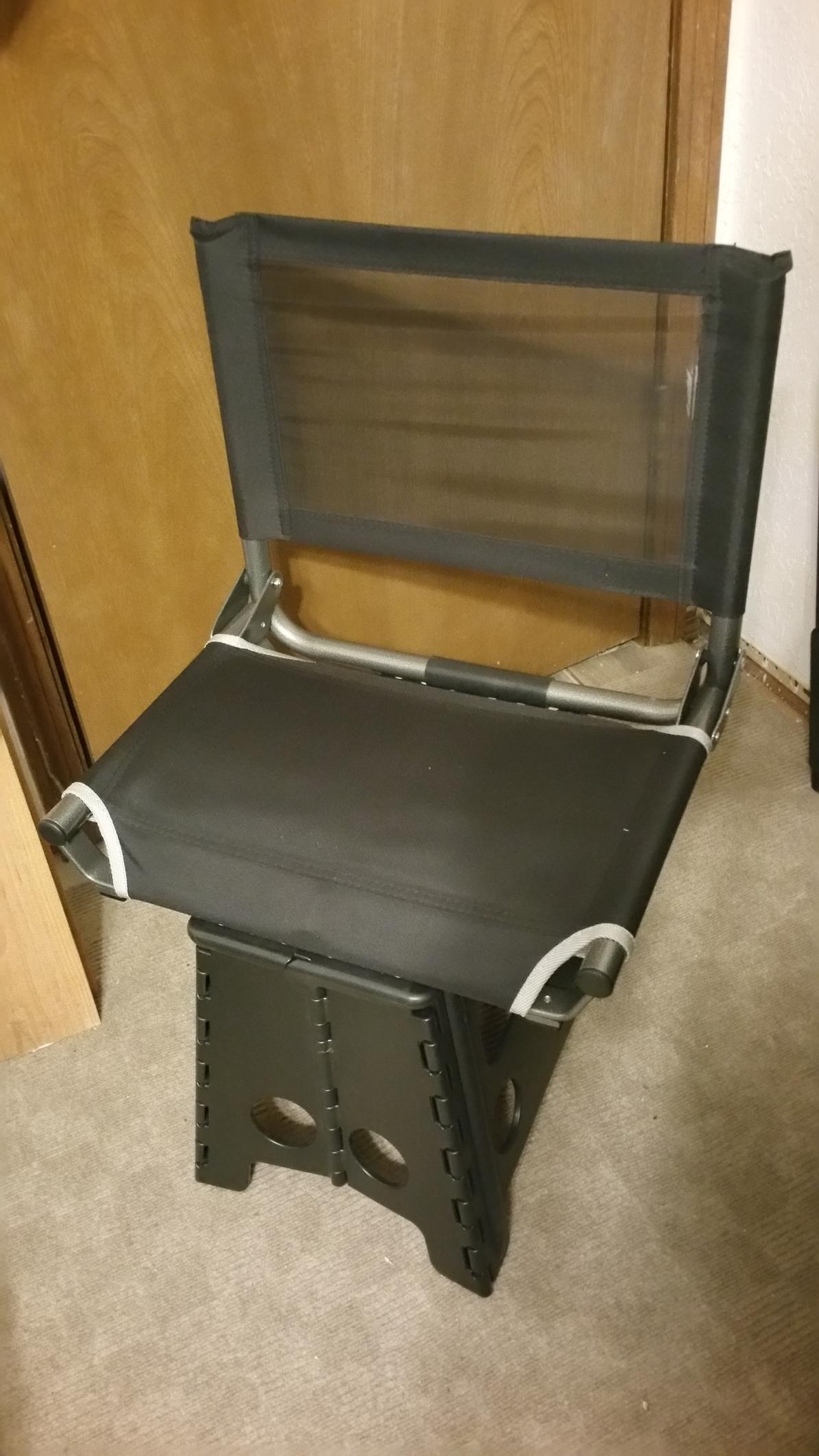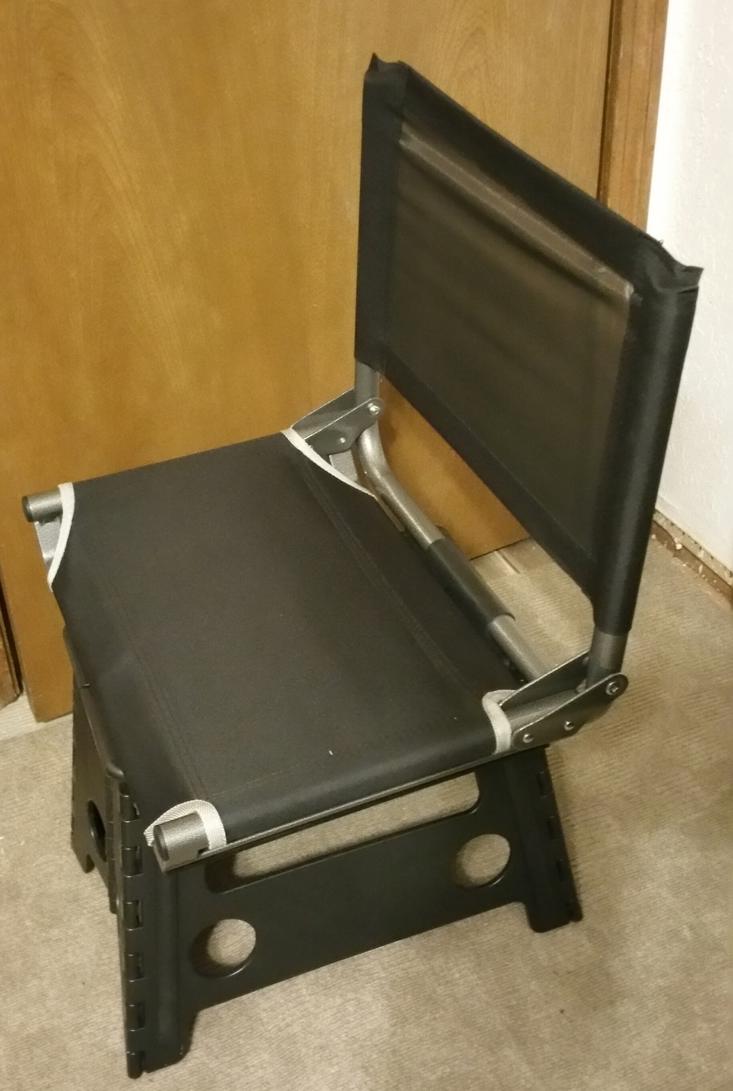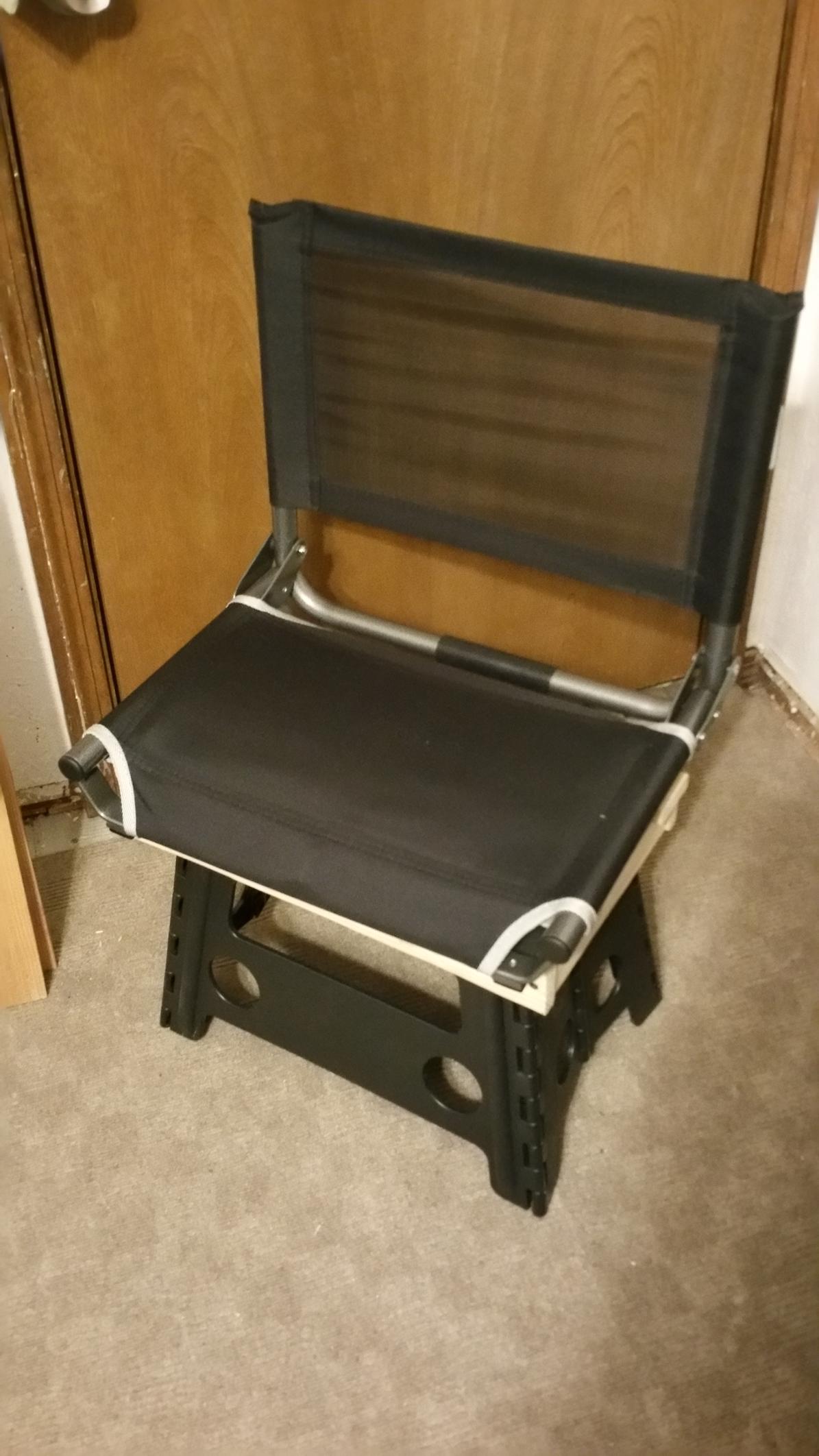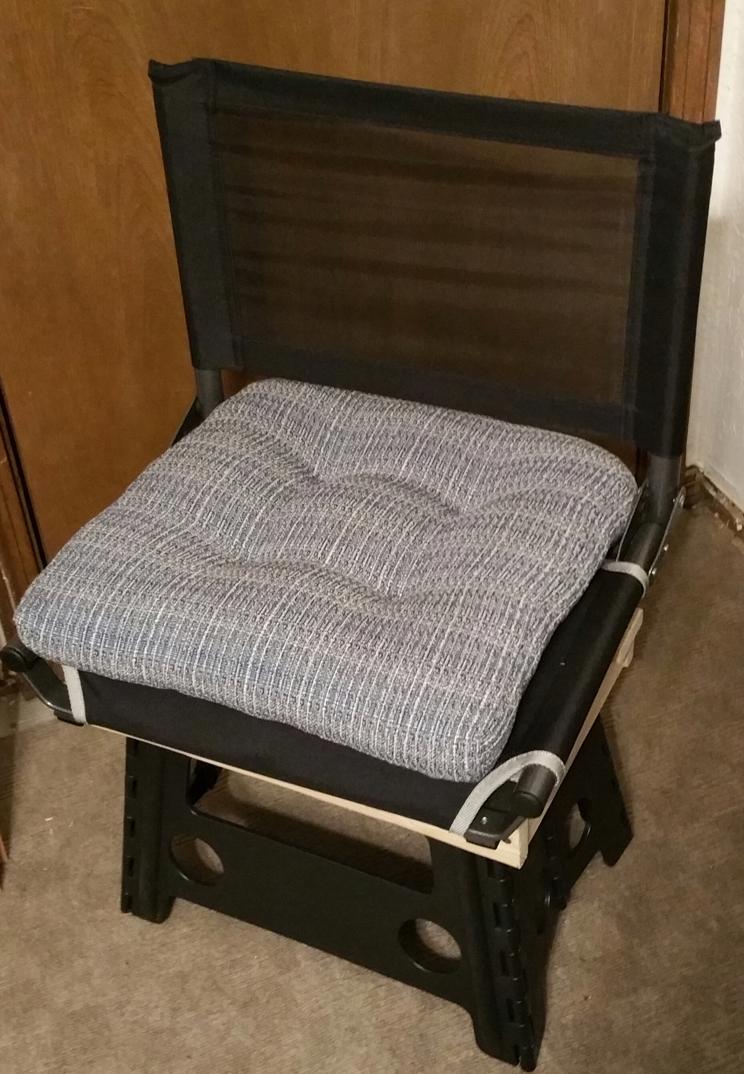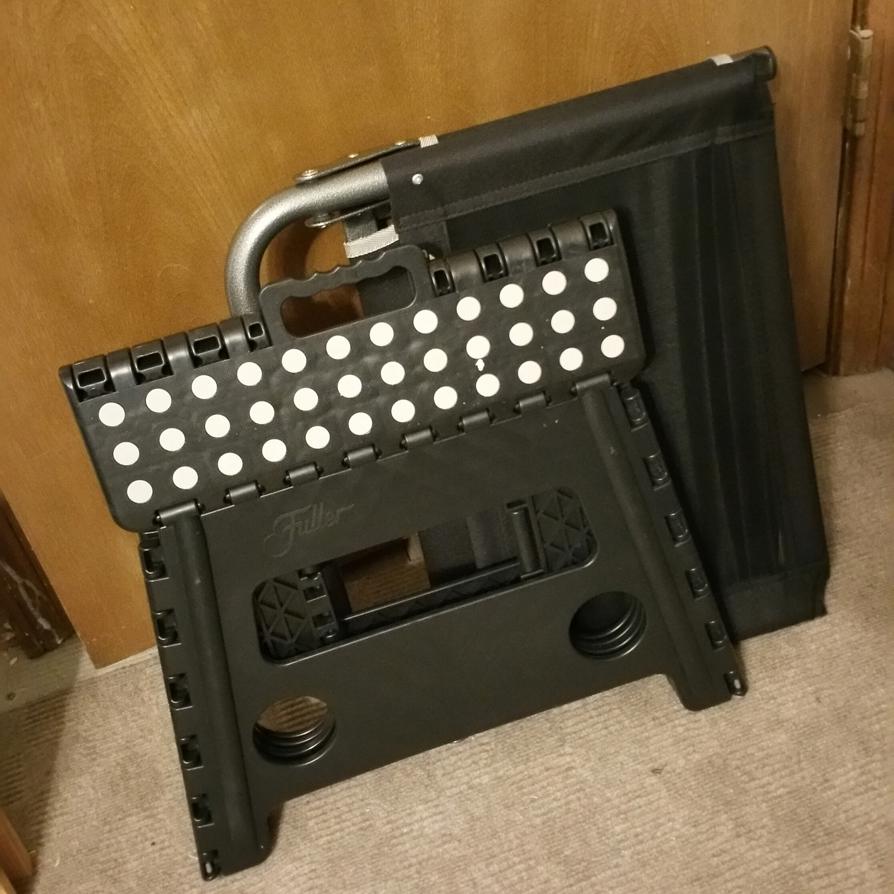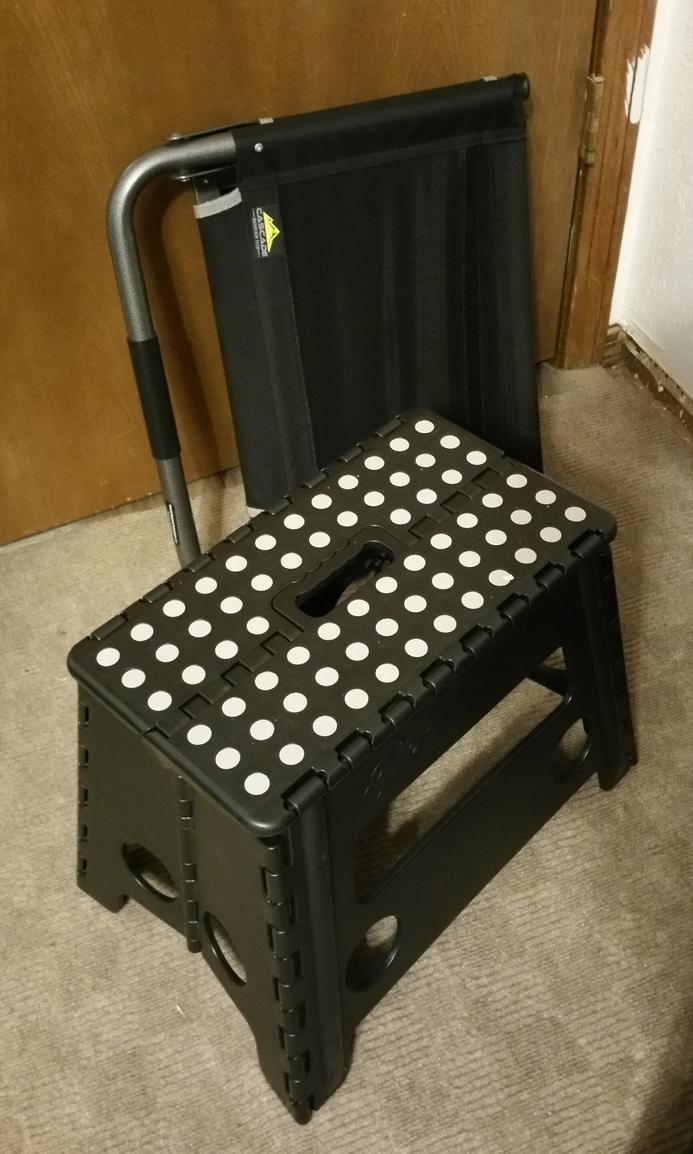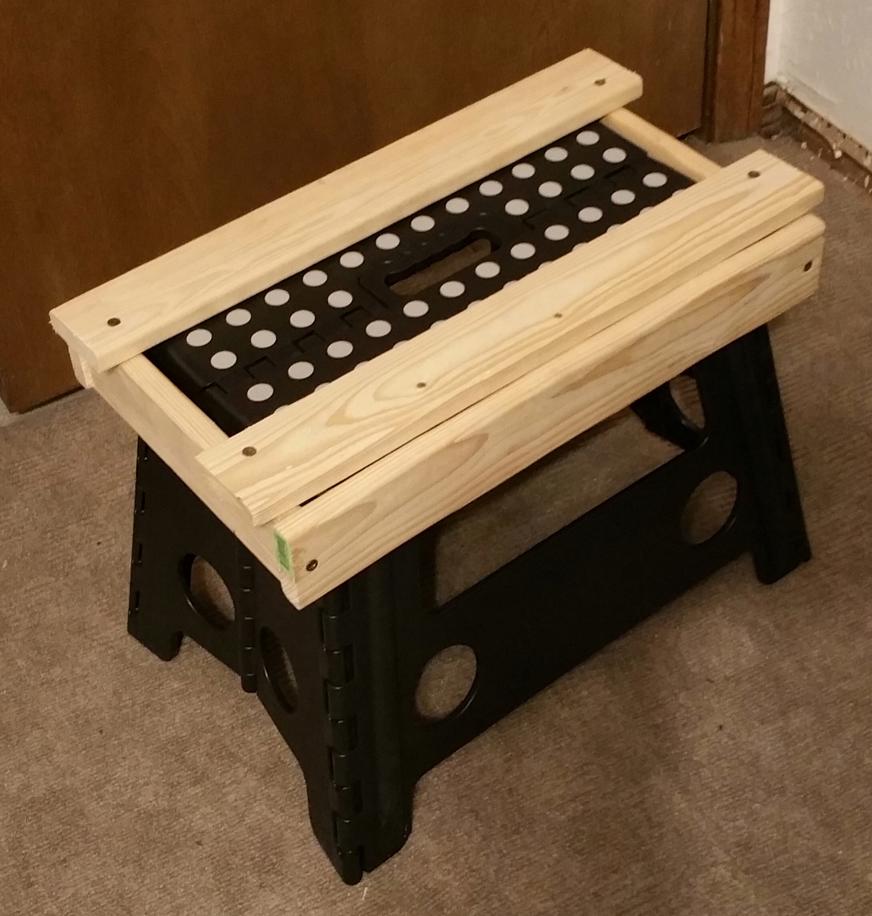It might have been pride, but after seeing some fancy tailgate steps, I eventually figured out that I’ve wanted/needed a little folding stepstool to keep in my truck and use it when I needed to get in and out of the bed. That would save me some cash. Finally, I broke down and got one.
Then, I realized I could use a decent little chair, but I don’t like those crazy beach chairs that seem to made from metal rods and shower curtains, and a full-sized chair (even a folding one) takes up too much space in the truck.
DIY
Page 2 of 3
Follow the link below for more information:Click the Link –> Peninsula Real Estate Investment Association (PREIA) monthly meeting Hope to see you there!
Decisions about providing care for an aging loved one are seldom easy. Various options exist in terms of elder care, including assisted living facilities and nursing homes. Seniors who are self-sufficient may be able to stay in a retirement community or active living building. In other instances, the best course of action is to have an elderly relative move in with other family members.
According to Dr. Nancy Snyderman, who recently took on the role of caregiver to her own senior parents, 44 million American adults are caring for an older friend or family member. MetLife estimates that nearly 10 million adult children over the age of 50 are now caring for an aging parent. Care is defined as helping with feeding, bathing, dressing, and other personal care needs, going beyond driving a parent to appointments or helping them with financial matters.
Taking care of a senior requires a profound commitment and can completely disrupt a person’s life, both at home and at work. Men and women faced with caring for an aging parent at home may want to employ several strategies to make that transition go as smoothly as possible.
- Talk to the senior about your options. Making decisions together will be best for everyone involved. It can be challenging to discuss mortality and whether or not elderly parents or relatives can properly care for themselves. Broach the subject well in advance of making any plans so you will have some understanding of how the senior feels about the situation and what would make him or her most comfortable. Your parents may already have a plan in place.
- Establish a caregiving budget. Caring for the elderly is expensive. MetLife says working Americans lose an estimated $3 trillion in lifetime wages, with average losses of more than $300 thousand for women and more than $250 thousand for men, taking time to provide care. Before a senior can be welcomed into your home, you must first determine which financial changes must be made to accommodate this person. Will a parent be contributing a portion of the expenses or paying rent? Is it feasible for you to reduce your working hours in order to provide care for this individual? Once you have the numbers in black and white, you can better assess your situation.
- Make physical modifications. Your home may not be equipped properly, or safe enough for an elderly resident. You may need to add a private space for your parent or relative, and install features such as night lights, secured railings, grab bars, ramps, a shower chair, and anti-slip surfaces. You may need to build an extension on the home or completely renovate what you have to make the space safe.
- Aim for stability. Moving an changing routines can be especially stressful for seniors who are used to their own schedules and habits. Transfer furniture and momentos from their homeino yours. Encourage seniors to maintain a social schedule and invite friends over. Try to help your loved one keep his or her doctors and if possible, take them to shop where they have shopped in the past. These opportunities will make the transition to a new home easier.
- Discuss finances. It’s essential to understand your loved one’s financial situation. Make a list of his or her assets, benefits, and insurance policies in his or her name. Understand which health procedures are covered and discuss ways to finance any procedures or medications that are not covered by those policies/benefits. Ask if your loved one wants you to manage the finances, or wait until it necessary. Professional help, such as an attorney, financial planner, or geriatric care manager, can make it easier to understand the legalities and subtleties of these arrangements.
- Make time for yourself. Caring for the elderly can seem like a full-time job, and it’s easy to forget yourself in the process. Making time for yourself so your own health is not sacrificed while you tend to your loved one.
Adapted slightly from original article by: as seen in the Daily Press HomeFinder insert, Oct, 2014. Original Source: Metro Creative Content
In the West, the practice of yoga wasn’t popular when today’s men and women over 50 were in their 20s, and 30s. However, since that time, the increasing popularity of yoga has led to more availability to a convenient class. Yoga is big business, attracting more and more people each year. Designed to promote physical and mental health, yoga has helped millions of people across the globe to control their stress and improve flexibility.
According to a study conducted by the Harris Interactive Service Bureau, roughly 20 million Americans practiced yoga in 2012, marking a 29 percent increase from just four years earlier. While some men and women over 50 may feel the opportunity to take up yoga has passed them by, nothing could be further from the truth. In fact, yoga can pay numerous dividends for the over-50 crowd. Consider taking advantage of the numerous physical and mental benefits yoga has to offer.
Yoga can help alleviate hypertensionAlso known as high blood pressure, hypertension is a potentially dangerous condition that makes the heart work harder to pump blood to the body. Hypertension contributes to a hardening of the arteries known as atherosclerosis, and can even contribute to the development of heart failure. A person’s risk of developing hypertension increases as he or she ages, so it’s important that men and women over 50 take steps to reduce their risk of hypertension, and yoga can help them do just that. A normal blood pressure reading is 120/80, but people with hypertension often have blood pressure readings of 140/90 and higher. Studies have shown that yoga can reduce the top number, which is referred to as systolic blood pressure. In a study published in the Journal of Clinical Hypertension, researchers found that men and women who practiced yoga for six hours per week for 11 weeks reduced their systolic blood pressure by 33 points. The study’s authors feel that the slow, controlled breathing that’s essential to practicing yoga decreases nervous system activity, helping the body manage its blood pressure levels.
Yoga helps practitioners maintain healthy weights.
While yoga may not help men and women shed weight as effectively as more vigorous activities, it can help them maintain healthy weights. Many men and women over 50 find vigorous or strenuous physical activity too demanding, and might not be able to perform such activities with the frequency necessary to prevent weight gain. But while yoga is physically demanding, those who practice yoga often find it takes a smaller toll on their bodies than more traditional strength training. Another way yoga can help to prevent a healthy weight it through its relation to stress. Yoga can help to relieve stress, and lower stress levels reduce the likelihood that men and women will overeat – a common response to elevated stress levels.
Yoga promotes strong bones.
Osteoporosis is a medical condition in which tissue loss leads to brittle and fragile bones. Aging is a significant risk factor for osteoporosis, and women are at even greater risk than men. The National Osteoporosis Foundation notes that women can lose up to 20 percent of their bone mass in the five to seven years after menopause, so it’s important that women (and men) take steps to strengthen their bones. The nature of yoga makes it an ideal activity to promote healthy bones. Because it is a weight-bearing exercise, yoga forces practitioners to hold the weight of their bodies up against gravity. This resistance to gravity puts mild stress on the bones, which respond by laying down new bone growth. But unlike other weight-bearing activities, such as jogging or walking, yoga does not damage cartilage or put stress on the joints. The AARP notes that studies have indicated the weight-bearing activity of yoga can be especially effective at reducing the risk of osteoporosis in post-menopausal women.
Adapted slightly from original article printed in “PrimeTime” (an advertising supplement to the Daily Press and The Virginia Gazette) dated October, 2014.
Follow the link below for more information:
Click the Link –> Peninsula Real Estate Investment Association (PREIA) monthly meeting Hope to see you there!
Maybe it’s just me. Have thoughts like these ever crossed your mind?
- Do they make a riding vacuum cleaner?
- I hate cleaning the gutters. I’m scared of ladders. What was I thinking?
- I hate mowing all this grass.
- If I move my closet to one of the bedrooms downstairs, I don’t need put another lightbulb in the closet upstairs.
- When was the last time I used that pool table? or the dining room table?
If so, keep reading. I’ve listed some things to consider before downsizing your home.
Once the kids have left the nest, many folks my age (50-ish) begin to consider housing options, such as moving to “someplace new” or “downsizing” their current homes. Downsizing to a smaller home can be beneficial for a variety of reasons, including less home to clean and maintain, more affordable utility bills and lower property taxes. The decision to downsize is rarely black and white, and both men and women alike often struggle with the decision.
Perhaps the most difficult part of the decision of whether or not to downsize to a smaller home include the sentimental attachment many homeowners, especially those with children, have to their homes. The home might be too big for current needs, but it also was the same place where your son took his first steps, and where your daughter lost her first tooth. Saying goodbye to a place that was home to so many memories isn’t easy. But, there’s more than just sentimental value to consider when deciding whether or not to downsize your home after the kids have grown up and moved out.
- Personal financesYour financial situation merits significant consideration when deciding if the time is right to downsize your home. If your retirement nest egg is not as substantial as you would like it to be, then it would seem as though downsizing to a smaller, more affordable home is a great opportunity for you to be start catching up on your retirement savings. But that’s only true if your new home won’t incur any additional expenses that are already taken care of in your current home. For example, your current home may be fully furnished, while a new, smaller home may require you to buy all new furniture because your existing item simply won’t fit. The cost of such furnishings can be considerable. If you plan to move into a condominium, you can expect to pay monthly homeowner/association fees, which can be substantial. So while the condo itself might be smaller, the additional expenses associated with the property may end up making the smaller home more expensive and prevent you from saving more money for retirement.
- SpaceEverything costs. How much space do you really need? Once the kids have moved out, couples may feel like all of that extra space is going to waste. But, that can be a knee-jerk reaction, and upon more thorough examination of the space and your needs you may just find that you can put all of that extra square footage to good use after all. If you have always wanted your own art studio, then now might be the perfect time to make dream into a reality. Always wanted a room devoted to home theater? Get to work on converting your basement from an all-purpose game room to your own private movie theater. If, after considering the space in your home, you find the extra square footage really not appropriate for your future plans, or is just too much to upkeep, then you would no doubt like a cozier, more appropriate, home that’s less of a responsibility to maintain.
- Real Estate MarketThere are seller’s markets and buyer’s markets. Ideally, you would like to sell your home in a seller’s market. But, keep in mind that without proper planning, that might be the same market in which you hope to buy a new home. The nature of the real estate market depends upon a host of factors, including geography and timing. If the city or town where you currently live is in the midst of the seller’s market and you are planning on moving to a location where buyers have the upper hand, then now might be a great time to move. But, if you currently live in a buyer’s market and hope to move to a seller’s market, you may end up paying a steep price, even when downsizing to a smaller home. Things may even themselves out if you want to downsize to a smaller home your current community, but do your homework nonetheless, researching the time of year when you’re most likely to get the most for your home and find the best deal on your next place. Unless there are substantial mitigating factors, you have an advantage when downsizing. Don’t rush to move out of your current home and into your next one. Take ample time to make the real estate market work for them.
Adapted slightly from original article printed in “PrimeTime” (an advertising supplement to the Daily Press and The Virginia Gazette) dated October, 2014.
Most prosthetics are relatively simple products, and are designed to be routinely cleaned by the owner/user or their direct caregiver. However, some more complicated prosthetics need to be serviced by a professional for some situations.
- What if the prosthesis does not fit right?The process of being fit for your prosthesis will involve several visits to create a device that fits you and your needs. Follow-up visits with your prosthetist are as important as the initial fitting. You will need to make several visits for adjustments with the prosthetist as your residual limb changes and continues to heal. Tell your prosthetist if the prosthesis is uncomfortable in any way. They can help you ease pressure areas, adjust alignment and work out any problems you may experience. Using your prosthesis should not be painful. The more comfortable the fit, the more likely you are to use it. Talk honestly with your prosthetist about your needs and goals. Discuss the things you want and need to do in your life after surgery.
- Replacement / Obsolescence / How long will the prosthesis last?Depending on your age, activity level and growth, the prosthesis can last anywhere from several months to several years. In the early stages after limb loss, many changes occur in the residual limb that can lead to shrinking of the limb. This may require socket changes, liners, or even a different device. Increased activity level and a desire to do more activities can create a need for a change in the prosthesis or its parts. Once you are comfortable with the fit of your device, the prosthesis needs only minor repairs or maintenance and can last an average of three years. Your prosthesis should be regularly checked by your prosthetist to avoid any major problems.
- What if the prosthesis breaks?Yes, things can happen that will require repair or replacement. It’s a good idea to know about warranties and what to expect from your prosthetist. Get small problems taken care of right away. There is no benefit to waiting. Waiting may cause a more difficult repair or even a serious skin breakdown. You can do harm, not only to your residual limb, but also to other parts of your body. Strain on other muscles, like your back and shoulders, will affect your posture and the performance of the device, and will increase the amount of energy needed to use it.
Follow this link for access the FAQ from the Amputee Coalition.
Excerpted and then adapted slightly from the source.
Many homeowners have found themselves scrambling to make their homes handicap-accessible after a sudden injury or illness. In addition, home homeowners have found themselves looking to make adjustments to their homes in anticipation of welcoming elderly, less mobile relatives into their homes.
Converting a home into a handicap-accessible space can seem like a daunting task that requires adjustments to nearly every part of the house. While the extent of those adjustments depend upon the individual who needs accommodation, some of the areas that must be addressed the same regardless of that person’s particular condition.Take a look at the following places/items in the home:
- Entryways: Entryways must be examined when evaluating accessibility. Portable ramps can be an affordable option and are often an ideal solution for those that need a simple, temporary adjustment to the floorplan. Pay particular attention to the width of the entry. A standard wheelchair is wider than a folding one.
For long-term/permanent solutions, consider expanding doorways to at least 32 inches. Doorways at the most frequently-used locations, and the primary entry/egress should not be an obstacle and allow easy access.
- Bathrooms: A bathroom might be the area of the home that needs the most attention. Slippery conditions common to bathrooms can make things especially difficult for people in wheelchairs or with disabilities. Grab bars should be installed on tubs and showers, even next to toilets.
Grab bars aren’t the only adjustment homeowners should make in the bathroom as they renovate. Safety treads can be installed to provide a secure, slip-free surface on the floors of showers and tubs. There are also solutions for folks that do not have a firm grip. Portable transfer seats are also very helpful for people using wheelchairs. Also, there are several toilet models that area installed with an optional baseplate. By removing the baseplate, the seat is effectively lowered by as much as 2 to 4 inches.
- Water Fixtures: An often-overlooked adjustment are modifications to sinks throughout the home. A vanity cabinet under a sink often prohibits easy access to someone in a wheelchair. Replacing that model with a pedestal or wall-mounted type and ensuring that they are a little lower than a standard sink installation will make that space much more accessible. In shower stalls, and tubs with a shower option, adapt the showerhead to include a diverter and a hand-held wand to a shower stall to make it easier for those who have limited mobility.
- Closets: Transform a standard closet to feature multi-level bars, shelves, and drawers that can be opened with an easy pull from just one hand. Also, consider installing a light inside the closet if it doesn’t already have one.
Making a home more accessible can be a significant undertaking, but many of the adjustments homeowners must make are small in scale and won’t take too long too complete.
Adapted slightly from original article by: as seen in the Daily Press HomeFinder insert, Sep 20, 2014. Original Source: Metro Creative Content
I’m considering employing a caregiver. There’s a lot of things to consider before making such a decision.
To help get my thoughts focused on the process, pros & cons, etc. So, I turned to the web, and found a great thread on this subject at Caring.com.
Click the Link –> How much should I pay a live-in caregiver?
In writing up the job description, I find the need to clarify that client/patient(s) also employ a house cleaner/maid service, in order to assure readers that they will not be spending a majority of their time cleaning. Too many caregivers enter homes to assist client/patients only to discover that the client had just previously fired/released/discontinued a housekeeping service, having the misguided opinion that the caregiver or CNA is housekeeper, gardener, house cleaner, and chef all rolled into one.
Continuing my search, I found an article by Jane Gross as seen in a back issue of the NYT (Dec 30, 2008) with valuations from Marki Flannery, the president of Partners in Care.
Click the Link –>
Home Health Aides: What They Make, What They Cost.
Follow the link below for more information:
Click the Link –> Peninsula Real Estate Investment Association (PREIA) monthly meeting Hope to see you there!
© 2025 NuNu Mike'S Blogsite
Theme by Anders Norén — Up ↑
